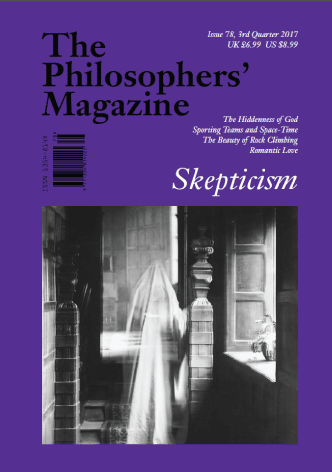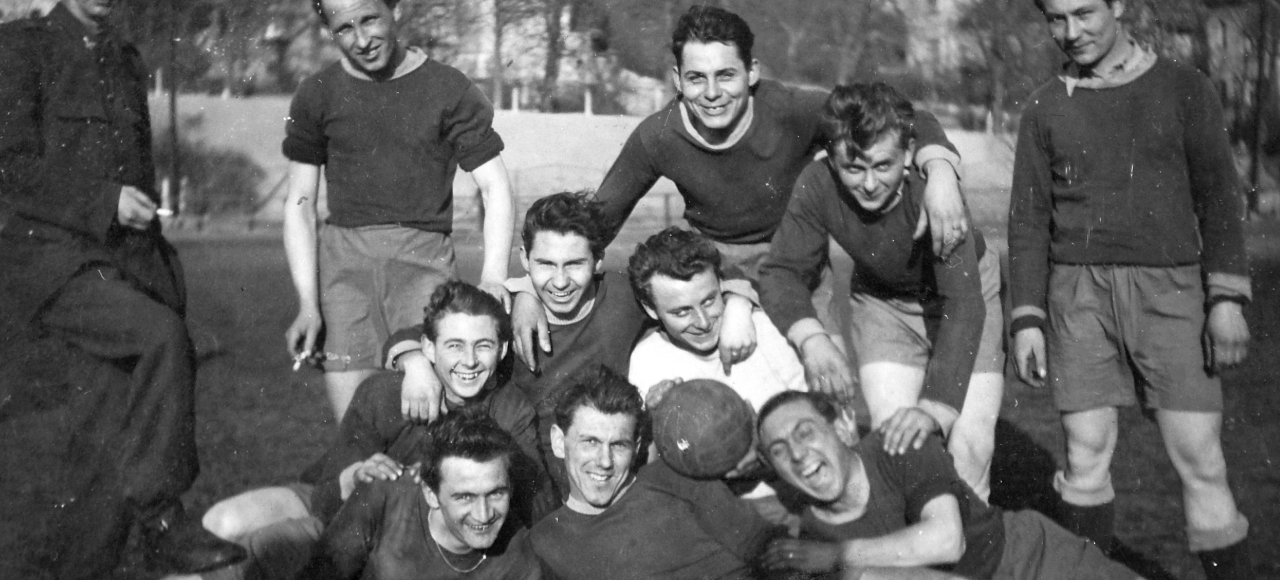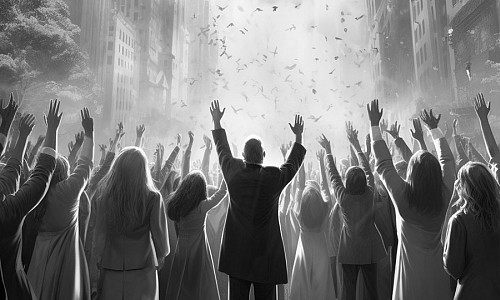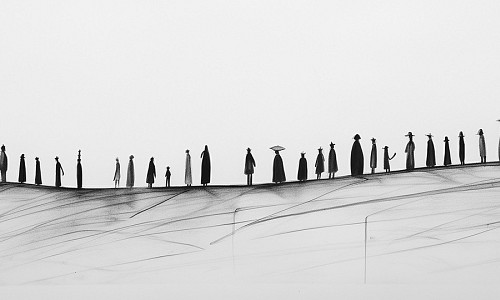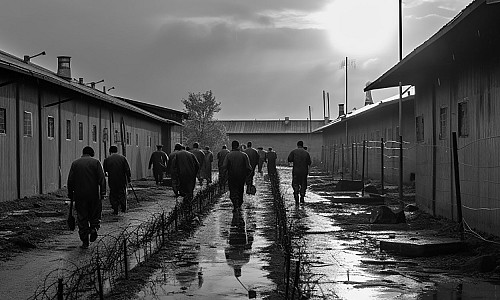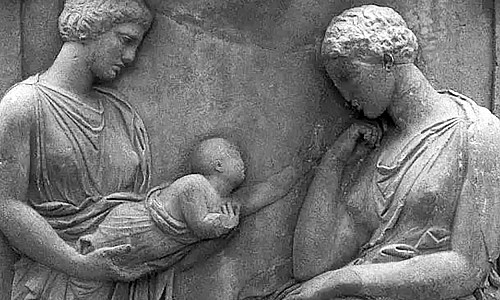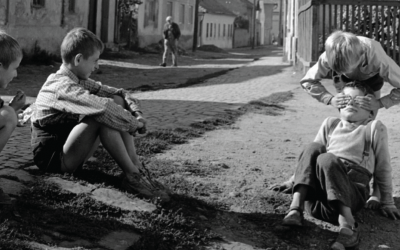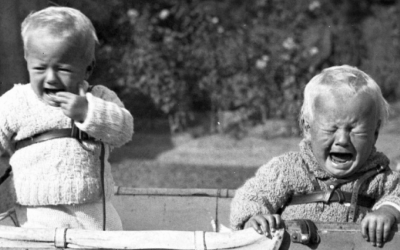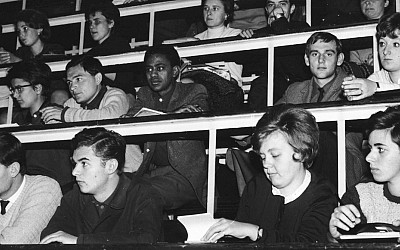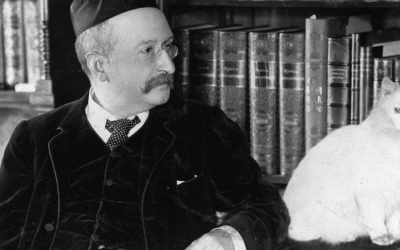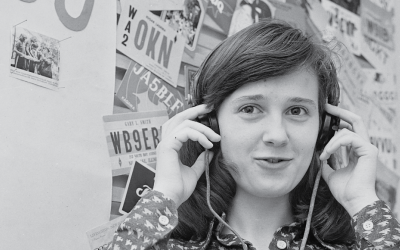David Papineau on what sport can tell us about deep philosophical questions
For many years I played for a travelling cricket team called the “Old Talbotians”. Every weekend during the summer months we matched ourselves against village sides, or teams from London newspapers like the Times or Guardian, or simply against other sides like ourselves. There was no league, but matches were intensely competitive, and we were considered one of the tougher fixtures on the circuit.
Our name sounds as if we were an old boys’ side from some minor public school. But in fact it was a joke. The team had originally been started by the journalists on Now! magazine, the short-lived attempt at a British version of Time founded by the financier James Goldsmith in 1979. For some reason, long since forgotten, the satirical magazine Private Eye, which was constantly at loggerheads with Goldsmith, always referred to his magazine as Talbot!
Now! magazine folded within two years. But the cricket team was more successful, and so the journalists kept it going, defiantly incorporating Private Eye’s slight into their club name. Over time, however, the links with Now! faded. When I first joined the team around 1989, there were still a few players left who had worked on the magazine. But age takes its toll, in cricket as elsewhere, and by the time I myself gracefully retired, some fifteen years later, all the old Now! hands had gone.
Should we still have been counted as the same team that the journalists had founded a quarter-century earlier? We still had the same name, but that was about it. The team had been replenished by friends of friends, younger acquaintances whose only qualification was that they knew what to do with a bat or ball. They included lawyers, salesmen, actors and a baker. Scarcely any of them had ever heard of Now! magazine.
Team identity may seem a funny thing to worry about, but it is an issue that matters a great deal to sports enthusiasts. Players and fans form intense attachments to particular teams, and they maintain these attachments over time. They bask in past glories, look forward to future successes, engage in long-standing rivalries, and remember injustices from decades ago.
Still, do such continued attachments make any sense? Sports teams change significantly over time, as did my Old Talbotians. Often this involves more than just turnover of personnel. Teams can move location – the Los Angeles Dodgers were once the much-loved boys of Brooklyn. They can split into two – Hapoel Katamon Jerusalem and Hapoel Jerusalem, both in the second tier of Israeli soccer, are fierce rivals who have claimed the same ancestry since they split a decade ago. And teams can even merge – when I lived in Sydney, I was a fan of the proud Balmain Tigers, one of the founders of the Australian Rugby League, but in 1999 they were sadly amalgamated with Western Suburbs to form “Wests Tigers”.
How much change can a team tolerate and still remain itself? Philosophers have long asked this kind of question about other entities. The ancient Greeks started it when they asked if Theseus’s ship would still remain the same ship even if all its planks had been replaced over years of repairs.
This might seem an easy one. Isn’t it obvious that it would still be the same ship? You don’t destroy a ship just by replacing planks. But what if some smart Athenian had hung on to the discarded planks, tidied them up, and put them together again to make another ship? Wouldn’t that have a better claim to be Theseus’s original ship? After all, it wouldn’t just look the same, but be made of exactly the same planks. Still, if this reassembled ship is the original one, then the one with the replacement planks can’t also be it – two different ships can’t both be the same ship.
Philosophers ask similar question about people. If I suffer an advanced case of Alzheimer’s disease, and my memories and character fade away, am I still there? Again, a first reaction might be that I am, even though in a sadly depleted state. But what if some future technology allows my memories and dispositions to be copied into some specially created healthy body before they fade away? Wouldn’t there then be a good case that this imprinted being is David Papineau instead? Still, as before, both answers can’t be right. The depleted body and the imprinted one can’t both be me, since they’re clearly two different people.
Even though philosophers have been asking such questions for centuries, it can’t be said that they have agreed on any answers. In the case just raised, for example, some experts identify David Papineau with the depleted body, some with the imprinted one, some say that both the depleted and imprinted being were present in embryonic form in the young David Papineau’s body, some say that the original David Papineau ceases to exist once the two candidate successors come into being, some say that . . . well, take my word for it, the list of options is long and exotic.
Part of the trouble here is that most philosophers try to resolve these issues by appeal to intuitions. They check their theories against our gut reactions to ingenious cases. What would we say if the Star Trek beam-me-upper malfunctioned, and sent a Captain Kirk up to the Enterprise without eliminating the Captain Kirk on the planet below? What would we say if my brain was split in two and transplanted into two different host bodies? And so on.
However, people differ in their reactions to these scenarios, and even a single person’s reactions are not guaranteed to be consistent. It is scarcely surprising, then, that the method of intuition leaves us undecided between a range of incompatible theories. Instead of appealing to intuitions, we will do better to step back, and ask about the underlying purpose of distinguishing parts of reality as persisting objects, like ships, or people – or indeed sporting teams.
A good way to focus this issue is to compare persisting objects with events, like battles, storms, lectures, political demonstrations, or football matches. In some ways, persisting objects and events are similar. At any time, both occupy a limited region of space, and this region can move about as time progresses. The demonstration starts in Hyde Park and makes its way to Trafalgar Square; similarly, I have breakfast at home and then go to my office. (For the mathematically minded, both events and persisting objects can be represented as “space-time worms” in a space-time co-ordinate system: the cross-section of the worm at any time T represents the spatial extent of the event or object at T, and the succession of cross-sections at different times shows how the event or object moves through space over time.)
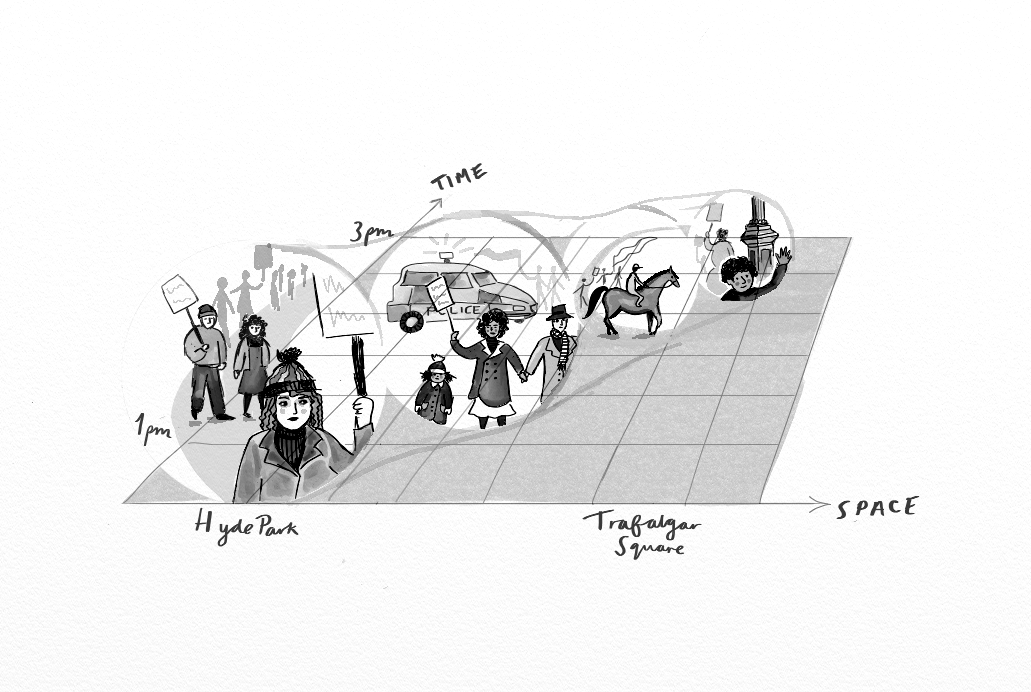
The “worm” of a demonstration. One end is at Hyde Park and 1 pm, and the other at Trafalgar Square and 3 pm.
Still, despite these similarities, we think of events and objects very differently. We think of events as being made up of stages. A football match has a first half and a second half, and if you’ve only seen the first half, you haven’t seen the whole match yet. But this doesn’t apply to objects. We don’t feel, just because your audience with the Pope only lasted a few minutes, that you didn’t meet the whole Pope, but only a small part of him.
As philosophers put it, persisting objects are wholly present at any time when they exist. With events, by contrast, only a stage, or temporal part occurs at any given time. The whole event is the sum of those temporal parts, from the beginning of the event to its end. (Think of the “space-time worms”. A temporal cross-section of a political demonstration’s “worm” doesn’t represent the whole demonstration – it’s just a freeze-frame representing one momentary stage in the demonstration. But a temporal cross-section of a persisting object’s “worm” represents the whole object. At the risk of confusing things, imagine a “space-time worm” of an earthworm. This portrays a succession of earthworms at different points in time, not a succession of earthworm-stages, whatever those would look like.)
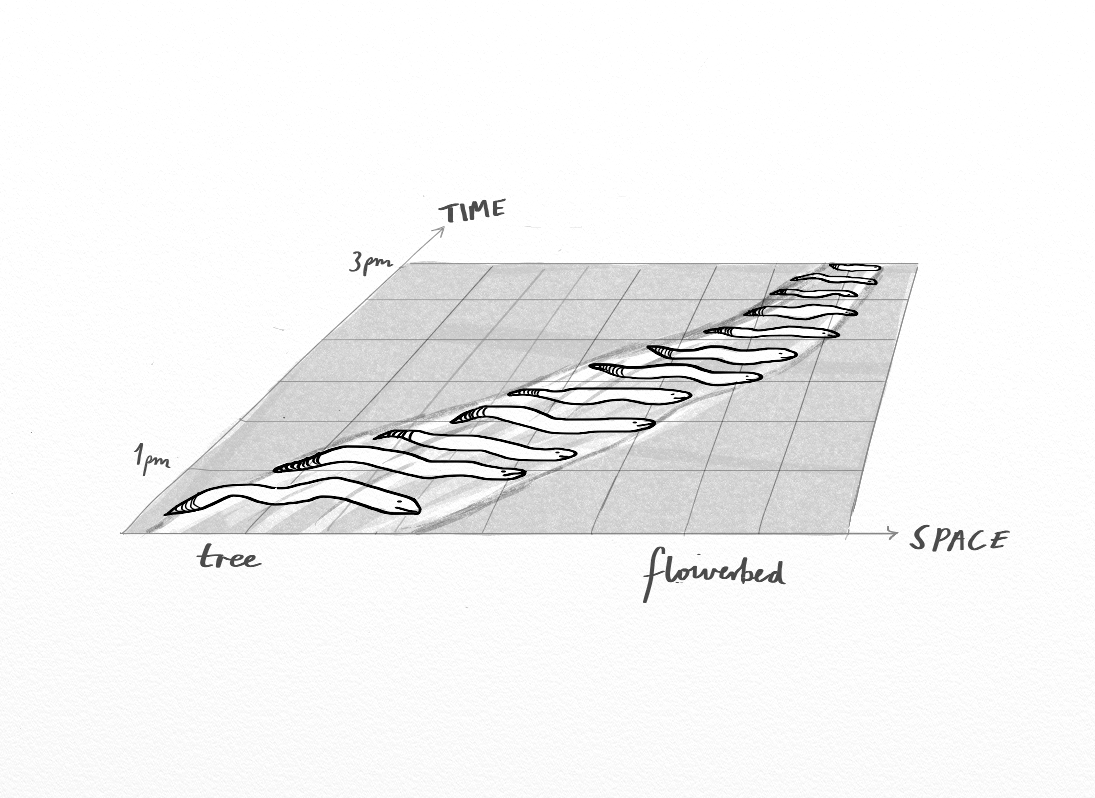
The “worm” of an earthworm crossing the garden. This “worm” (but not the earthworm) stretches from the tree and 1 pm, to the flowerbed and 3 pm.
Some philosophers think that these differences between persisting objects and events involve deep metaphysical facts about being and time. I think that’s making a meal of it. At bottom, both objects and events simply fill up volumes of space-time. The difference lies solely in their different internal structures. What makes objects different from events is their stability. My facial features don’t alter much from day to day, nor my bodily shape, nor my gender, nor the languages I speak, nor the way I walk. The same goes for artefacts and inanimate objects. My fishing boat doesn’t alter significantly between outings, apart from its capricious motor, while the north London hill I can see from my study is positively moribund.
Events are different. They are in constant flux. You can’t read off the later properties of an event from its earlier properties, as you can with objects. The battle may start with the cavalry and infantry in formation, but it will swirl around and lose combatants as it progresses. The storm may begin gently, but gather pace and leave destruction in its course.
This difference means that there is no point in breaking persisting objects into temporal parts, as we do with events. Because of their stability, we would gain no advantage from in thinking of objects as having event-like temporal stages. There would be no variations for this temporal differentiation to track. Imagine. Here’s the Monday David Papineau, and the Tuesday one, and so on – but they are all pretty much the same.
So, in my view, we distinguish parts of reality as persisting objects precisely because we can reliably read off their later properties from their earlier ones. Of course, this doesn’t work for all properties. I might wear a blue shirt on Tuesday even though I wore a white one on Monday, and you shouldn’t assume I will be sober tomorrow just because I am sober today. But, still, it works fine for facial features, gender, languages spoken, gait, and a wealth of other properties, even if not for shirt colour and sobriety. And in general, for any kind of persisting objects, there will be a wide range of properties that they maintain over time.
So what about sports teams? Do they display enough stability over time to be taken seriously as persisting objects? I don’t see why not. They typically wear the same kit from game to game, select their sides from the same pool of players, play to a given standard, host home matches at the same ground, belong to a given league, and so on. Once you have played a team once, you will know an awful lot about what to expect the next time.
With professional clubs, there is even more stable information you will glean from an initial encounter. You learn about the stadium, manager, assistant coaches, nicknames, favoured tactics, type of fans, chants, and many other such items. You don’t have to check these things every time you watch the team. You can work on the assumption that they will be the same next time as last.
Of course some of these things will change in the long run. Players move on, managers get sacked, new kits get designed. But that’s not the point. The idea that persisting objects are distinguished by the stability of their properties doesn’t require that these properties never change, only that they normally remain the same from one encounter to the next. People grow taller and fatter, their features coarsen, they learn and forget languages. But we generally work on the assumption that such changes can be ignored in the short to medium term.
So I say that the Old Talbotians I left in 2005 was the same team that the Now! journalists had founded a quarter-century earlier. If you met them one season, they would be roughly the same the next: mostly the same players, of roughly the same strength, with the same opening bowlers and star batsmen, the same laggard who always arrives late, the same fixture list, playing the same teams on the same grounds, the same level of sociability after the game, and so on.
Over time, these features gradually altered, with the result that the team at the end differed significantly from its original incarnation. But, precisely because these changes were gradual, you could still rely on this season’s Old Talbotians being more or less the same as the side you played last year.
What if a team’s features change suddenly? Then things are different. In the decade after World War Two, the Brooklyn Dodgers were one of the greatest sides in baseball history. They reached the World Series in 1947, 1949, 1952 and 1953, only to be beaten each time by the Yankees of Joe Di Maggio, Mickey Mantle and Yogi Berra. “Wait ‘til next year” Brooklyn parents would tell their kids. In 1955 next year finally came, and the Dodgers beat the “Bronx Bombers” in a 4-3 series to take the title. Even I, with my limited knowledge of baseball, can name the iconic figures: Pee Wee Reese, Roy Campanella, Duke Snider, Jackie Robinson.
Then in 1957 the owner of the Dodgers, Walter O’Malley, moved the team to Los Angeles to make more money. He has never been forgiven. My older Brooklyn friends put him right up there with Hitler and Stalin.
At first some of the Brooklyn fans maintained a loyalty to the players O’Malley took with him. But once those players had moved on, there was little to connect the Californian side with the original. Different stadium, different fans, only half the name. Nowadays, the Los Angeles Dodgers organisation still lays claim to the pre-move history, but scarcely anybody else counts them as the same side. The traumatic changes wrought by O’Malley cut the thread of historical continuity.
It’s rather the same when teams merge. At a stroke everything is changed. When my Balmain Tigers were amalgamated with Wests, we suddenly had a bunch of new players, a strip that we couldn’t recognise, and a new stadium out in Campbelltown for half our home games. A lot of the dispossessed fans supported the new club, for want of anything better, and it has achieved some success, winning the premiership in 2005, but it’s only a shadow of what we had before.
The Old Talbotians eventually met a similar fate. Towards the end of my career we started struggling for players, and so, a year or two after I stood down, we joined forces and fixture lists with a similarly challenged side, Gustavus Adolphus (don’t ask). We original Talbotians are still included in the emails from the new composite, now known as the G&Ts, and we follow the fortunes of our surviving ex-teammates with interest. But we don’t identify. When we have our annual reunion, in Ye Olde Cocke Tavern in Fleet Street, it is strictly Old Talbotians only.
When teams split, this can also obliterate the original club, but in a different way. Splitting needn’t involve any sudden imposition of alien features from outside, and both offshoots can be largely continuous with the original. Still, the mere fact of plurality can be enough to cut links with the joint origin.
Israeli football mirrors many features of the larger society. The teams are all identifiably either Jewish or Arab, though most feature players from both groups. The most prominent Arab team is Bnei Sakhnin (“sons of Sakhnin”), currently in the premier division, and based in the northern town of Sakhnin (where, incidentally, I gave a talk in 2014 on the mind-body problem and al-Kindi’s “flying man argument” to the town’s outstanding specialist science school).
Bnei Sakhnin’s bitter rivals are Beitar Jerusalem, distinguished by their rabid supporters and long-standing policy of never signing Arab players. When Beitar recruited two Muslim footballers from Chechnya in 2013, many fans viewed this as a betrayal of the club’s motto “pure forever”, and weren’t satisfied by the manager’s revealing clarification that “there is a difference between a European Muslim and an Arab Muslim”. Unsurprisingly, matches between Sakhnin and Beitar often erupt into violence, both on and off the pitch. Beitar doesn’t have a monopoly on Jerusalem soccer, thank goodness. For many years Hapoel Jerusalem were the other professional side in the holy city. “Hapoel” means “the worker”, and the many sports clubs in Israel with this cognomen originated in the labour movement that flourished before independence. For most of the last century Hapoel were serious rivals to Beitar, but from the 1990s they started sliding down the leagues under the ownership of a pair of fractious businessmen.
In 2007 a section of the fans lost patience, and founded a breakaway side, with the joint aims of restoring their collectivist ideals and offering real opposition to the noxious Beitar. They’ve suffered various ups and downs since then, but they are now back with the other Hapoel Jerusalem in Liga Leumit, the second tier of Israeli soccer, under the name Hapoel Katamon Jerusalem (Katamon was the area of Jerusalem where Hapoel originated).
So which is the real Hapoel? Both sides can mount a strong case. Hapoel Jerusalem have the more direct line of descent, but Hapoel Katamon claim greater affinity with the club’s original vision. Moreover, a significant number of pre-split players have ended up with Katamon, not to mention the preponderance of the fans.
If the two sides have equally good claims, this means that neither can be the original club, which must therefore have ceased to exist. After all, when they play each other in the league this season, it will be a proper match between two different teams, not a club playing itself.
The funny thing is that this eclipse of the original club depends entirely on the duplication of successors, rather than any discontinuity in inherited features. Suppose that the breakaway club hadn’t been founded in 2007, but that Hapoel Jerusalem had developed just as it did in reality, losing some players and shedding some fans in subsequent years. Without the rival side, there wouldn’t have been any doubt that this was still the same Hapoel Jerusalem continuing its downward slide.
Or suppose that the owners had formally wound up their Hapoel Jerusalem in 2007, at just the point when the disgruntled fans got organised. Then there would have been no dispute about Katamon’s claim to the heritage.
The point is that each club on its own has quite enough continuity with the original to qualify as its continuation. What messes things up is simply the duplication.
This phenomenon isn’t peculiar to sporting teams. If the beam-me-upper simply fails to operate, and leaves Captain Kirk on the planet below – well, there he is. And, if it works normally, he’s on the Enterprise. What causes a problem, though, is when the teletransporter duplicates Kirks, for then both have an equal claim to be him. It’s the same with ships. The repaired ship and the reassembled ship would each unquestionably be Theseus’s ship, if only the other weren’t there to contest its claim.
I said earlier that our rationale for discerning persisting objects is that we can read off their later properties from their earlier ones. But we now see that there is more to it than that. We also want to keep distinct objects distinct. From the perspective of anticipating later properties, we might as well lump the two Hapoels together, along with the two Kirks and the two ships. Their common ancestries would provide a perfectly good guide to their many shared features.
However, this lumping-together would generate any number of tangles in our dealings with the duplicates. Which team gets relegated, when one finishes bottom of the league? Who apologises, when a Captain Kirk loses his temper? Who pays the bills, when a ship damages its cargo?
Questions like these show why we need to distinguish objects even when they share a common origin and so many of their properties. Despite the similarities between such twins, we still need to keep track of which is which, lest we end up holding one responsible for deeds performed by the other. In effect, the need to keep track of different individuals pulls against the desire to anticipate properties. In the face of duplicates, we are forced to give up on the anticipation so as to keep count of who did what.
So it is just as well that things don’t split often. If they did, we would need to disavow continuities in order to keep distinct offshoots separate, and would lose our ability to read later properties straight off from earlier ones. Perhaps we should be thankful that duplicate people are largely restricted to science fiction, duplicate ships to philosophical imagination, and duplicate teams to the strange world of Israeli soccer.
David Papineau is a professor of philosophy at King’s College London and the City University of New York Graduate Center. This article is adapted from his new book Knowing the Score (Constable and Basic Books) which looks at various ways in which sporting issues cast light on long-standing philosophical problems.
Illustrations by Katy Papineau.
You might also like...
